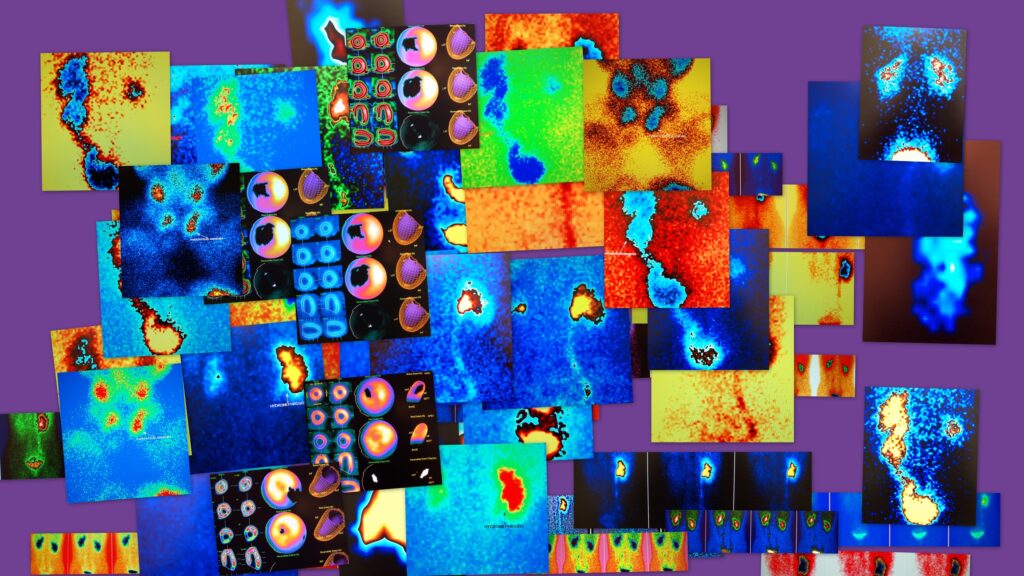Summary: Artificial intelligence (AI) agents are increasingly critical in protecting medical imaging systems from cybersecurity threats. As hospitals and medical facilities increasingly rely on digital imaging technologies, safeguarding sensitive patient data and maintaining system integrity has become more challenging. AI agents offer powerful solutions through threat detection, anomaly recognition, real-time monitoring, predictive analytics, and automated response. This article examines how AI agents can significantly improve cybersecurity in medical imaging, ensuring patient data confidentiality, system availability, and operational integrity within healthcare environments.
Keywords: Artificial Intelligence, Cybersecurity, Medical Imaging, Threat Detection, Anomaly Recognition, Data Protection.
Introduction to AI and Cybersecurity in Medical Imaging
Medical imaging systems, including computed tomography (CT), magnetic resonance imaging (MRI), ultrasound, and positron emission tomography (PET), form the backbone of modern diagnostics. These systems generate vast quantities of sensitive patient data, making them attractive targets for cyberattacks. Breaches in medical imaging systems not only compromise patient confidentiality but can also interrupt clinical workflows, delay critical diagnostics, and negatively impact patient care outcomes.
AI agents have emerged as a crucial component in cybersecurity strategies, offering sophisticated defences beyond traditional firewalls and antivirus solutions. Leveraging machine learning algorithms and predictive analytics, AI agents identify vulnerabilities and neutralise threats more efficiently and accurately, enabling healthcare providers to maintain data security and continuity of services.
AI-Driven Threat Detection in Medical Imaging Systems
Medical imaging systems are particularly vulnerable due to their interconnected nature with hospital networks, cloud platforms, and internet-enabled medical devices. AI agents specialise in threat detection by continuously monitoring data exchanges and operational behaviours within imaging networks. They swiftly detect anomalies indicative of cyber threats, such as unauthorised access attempts, malware infiltration, and ransomware attacks.
Machine learning algorithms, trained on vast datasets comprising known threats and standard operational patterns, enable AI agents to distinguish benign from malicious activities. For instance, an AI agent deployed within a hospital’s imaging server can detect unusual file access patterns, abnormal login attempts, or irregular data encryption activities, thereby providing early warning signals of a potential breach.
Anomaly Recognition and Behavioural Analysis
Traditional cybersecurity solutions typically rely on signature-based detection methods that recognise only previously documented threats. However, emerging cyber threats increasingly exploit zero-day vulnerabilities, which conventional methods fail to identify promptly. AI agents overcome this limitation by employing behavioural analysis techniques to recognise unusual patterns and system behaviours in real-time, irrespective of whether a particular threat has been previously documented.
AI-driven anomaly recognition involves constant surveillance and assessment of regular operational patterns. AI agents learn what constitutes standard imaging data transmission, user activities, and system interactions. For example, an AI agent might recognise abnormal spikes in network traffic to a hospital imaging archive occurring at unusual times, suggesting attempts to exfiltrate sensitive imaging data. By flagging these anomalies immediately, AI agents allow healthcare cybersecurity teams to intervene proactively.
Real-Time Monitoring and Incident Response Automation
Time is critical during cybersecurity incidents affecting medical imaging systems. Any delays in detection or response increase the likelihood of data compromise and clinical workflow disruption. AI agents significantly reduce response times through real-time monitoring and automated incident responses.
AI agents continuously monitor medical imaging systems and immediately alert cybersecurity teams to detected threats. Moreover, these intelligent systems can automatically isolate affected areas, limiting damage and reducing downtime. For example, if malware infiltrates an MRI scanner, the AI agent can instantly sever network connections, quarantine infected files, and initiate backup procedures to maintain clinical operations.
Automated incident response reduces the dependency on manual intervention, freeing cybersecurity personnel to focus on high-level decision-making and strategic threat management. Consequently, medical imaging facilities benefit from improved resilience, quicker restoration of services, and reduced operational disruption.
Predictive Analytics for Enhanced Cyber Resilience
Predictive analytics represent a transformative feature of AI agents, proactively identifying potential threats before they materialise into tangible risks. By analysing historical cybersecurity incidents, vulnerabilities, and system usage patterns, AI agents predict future attack vectors and vulnerabilities that cybercriminals might exploit.
Predictive analytics allow healthcare institutions to adopt a forward-looking cybersecurity posture. For example, an AI agent might predict that specific vulnerabilities associated with older imaging modalities or outdated operating systems are susceptible to future exploitation. Healthcare providers can thus prioritise cybersecurity updates, patches, and preventive measures effectively, allocating resources where they provide maximum benefit.
Predictive AI analytics ensure that medical imaging cybersecurity evolves continuously, staying ahead of emerging threats. This proactive approach is essential as cyber threats continually evolve, becoming increasingly sophisticated and targeted.
Data Protection and Patient Confidentiality
Protection of patient confidentiality is foundational within medical imaging. AI agents significantly enhance data protection by monitoring and enforcing compliance with strict data handling protocols and regulatory standards, such as GDPR (General Data Protection Regulation) and HIPAA (Health Insurance Portability and Accountability Act).
AI systems detect improper access or unauthorised attempts to download, copy, or distribute sensitive imaging data. For instance, AI agents analyse patterns to spot employees accessing data unrelated to their role, triggering security alerts and preventing potential breaches. Additionally, AI facilitates robust encryption and secure data handling protocols, ensuring data integrity and confidentiality during storage and transmission.
By maintaining constant oversight, AI agents help healthcare organisations demonstrate compliance with data protection regulations, avoiding penalties and reputational damage associated with data breaches. They also assure patients and stakeholders that their personal information remains secure, fostering trust and compliance within healthcare services.
Challenges and Ethical Considerations
While AI agents provide significant cybersecurity benefits, their deployment within medical imaging systems involves specific challenges and ethical considerations. One prominent challenge is ensuring transparency and interpretability of AI decision-making processes. Healthcare providers must understand how AI agents reach specific cybersecurity conclusions or recommendations. This transparency is essential to building trust and facilitating compliance with legal and ethical standards.
Ethical considerations also include the responsibility of ensuring unbiased decision-making by AI agents. Algorithms trained on incomplete or biased datasets could produce discriminatory outcomes or false positives, negatively impacting clinical workflows. Rigorous validation, regular audits, and continuous improvement of AI agents mitigate these ethical risks, ensuring fair, reliable, and transparent cybersecurity solutions.
Additionally, concerns regarding patient privacy and data ownership necessitate clear policies governing AI data usage and management. Ethical frameworks must guide AI-driven cybersecurity, ensuring data protection without infringing patient rights or confidentiality.
Future Prospects and AI Integration in Medical Imaging Cybersecurity
AI agents significantly enhance cybersecurity in medical imaging by combining real-time threat detection, anomaly recognition, predictive analytics, and automated response mechanisms. As cyber threats become more sophisticated and targeted, AI-powered cybersecurity measures will be essential in safeguarding patient data, maintaining clinical integrity, and ensuring continuity of medical imaging services.
However, healthcare institutions must carefully navigate challenges associated with transparency, interpretability, ethical governance, and continuous validation of AI solutions. Proactively addressing these issues ensures AI agents fulfil their full potential as indispensable cybersecurity resources, facilitating safe, secure, and resilient medical imaging environments.
The future prospects for AI integration in medical imaging cybersecurity are extensive. Emerging technologies, such as advanced deep learning techniques and quantum computing, could further enhance AI agents’ capabilities, enabling even more precise threat predictions, faster detection, and more effective incident management.
Ultimately, AI agents represent a transformative cybersecurity solution, providing medical imaging systems with robust defences against evolving cyber threats. Healthcare providers embracing AI-driven cybersecurity will be better positioned to deliver secure, reliable imaging services, protecting both patient welfare and institutional integrity.
Disclaimer: The information provided in this article, AI Agents Unleash Powerful Cybersecurity Defences To Protect Medical Imaging, is for general informational and educational purposes only. While every effort has been made to ensure the accuracy and reliability of the content at the time of publication, Open Medscience makes no representations or warranties of any kind, express or implied, about the completeness, accuracy, or suitability of the information contained herein.
This article does not constitute professional advice on cybersecurity, artificial intelligence applications, medical imaging, or data protection. Healthcare institutions and professionals are advised to seek expert guidance and conduct their own due diligence before implementing any cybersecurity measures or AI solutions described.
Open Medscience shall not be held liable for any loss, damage, or consequences arising from the use of, reliance on, or interpretation of the information presented in this publication. All technologies, tools, and strategies mentioned are subject to ongoing research and development and may not be universally applicable or appropriate for every medical imaging environment.
You are here: home » diagnostic medical imaging blog »



